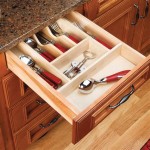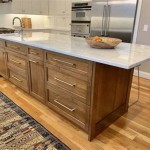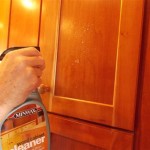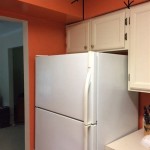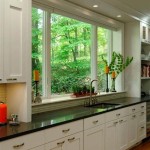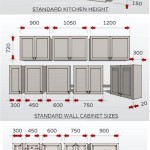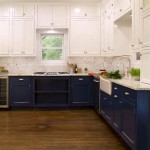Glass For Kitchen Cabinet Doors: A Comprehensive Guide
Glass kitchen cabinet doors offer a versatile and visually appealing alternative to solid wood or laminate options. They introduce light, depth, and style, transforming the overall ambiance of the kitchen space. The incorporation of glass into cabinet design isn't merely aesthetic; it also provides functional benefits, such as allowing a glimpse of the contents and creating an open, airy feel. This can be especially beneficial in smaller kitchens, where maximizing the sense of space is crucial. Furthermore, the wide range of glass types, finishes, and styles available allows for customization to suit diverse design preferences and kitchen layouts.
The use of glass in kitchen cabinets dates back several centuries to the Victorian era when displaying fine china and silverware became a symbol of affluence. Over time, the practical benefits and aesthetic appeal of glass cabinets have ensured their enduring popularity. Today, advancements in glass manufacturing and cabinet construction techniques have expanded the design possibilities even further. Options range from traditional clear glass panels to frosted, textured, or stained glass, each offering a unique aesthetic and level of privacy. The choice of glass significantly impacts the overall look and feel of the kitchen, influencing factors such as light transmission, visual depth, and perceived spaciousness.
The selection of glass for kitchen cabinet doors involves considering several key factors, including the desired level of visibility, the overall design aesthetic, and the budget parameters. Understanding the various glass types and their characteristics is essential for making an informed decision that aligns with both functional needs and style preferences. This guide explores the diverse options available, highlighting their respective advantages and disadvantages, and providing insights into how to effectively incorporate glass into kitchen cabinet design.
Understanding the Types of Glass Used in Kitchen Cabinets
The market offers a wide array of glass types suitable for kitchen cabinet doors, each possessing unique properties that influence its appearance, functionality, and durability. The most common types include clear glass, frosted glass, seeded glass, textured glass, and stained glass. Each type caters to different aesthetic preferences and practical requirements. The selection of the most appropriate glass type depends largely on the desired level of visibility, the overall design theme of the kitchen, and the budget available.
Clear Glass: Clear glass provides unimpeded visibility into the cabinet's contents. It's a classic choice that showcases displayed items and allows for easy identification of stored items. However, clear glass requires meticulous organization within the cabinets, as any clutter or disarray will be readily visible. This can be a disadvantage for those who prioritize concealed storage or prefer a more relaxed organizational style. Clear glass is generally the most affordable option and readily available.
Frosted Glass: Frosted glass, also known as etched glass, is created by sandblasting or acid-etching clear glass, resulting in a translucent surface that obscures the view without completely blocking light. This offers a balance between visibility and privacy, hiding messy cabinet contents while still allowing a soft glow to permeate through. Frosted glass is a popular choice for those who want a cleaner, less cluttered look without sacrificing the visual interest of glass doors. It also tends to be slightly more forgiving of fingerprints and smudges compared to clear glass.
Seeded Glass: Seeded glass contains small bubbles or "seeds" distributed throughout its surface. This textured effect adds a vintage or rustic charm to the kitchen. The seeds diffuse light, creating a subtle distortion that obscures the contents of the cabinet while still allowing a hint of what's inside to be visible. Seeded glass is a good option for those seeking a decorative element that enhances the overall character of the kitchen.
Textured Glass: Textured glass encompasses a variety of patterns and designs imprinted onto the glass surface. This can include ribbed, wavy, or geometric patterns. The texture not only adds visual interest but also distorts the view, providing varying degrees of privacy. Textured glass is available in a wide range of styles, making it a versatile option for different design aesthetics, from modern to traditional. The level of obscurity depends on the depth and complexity of the texture.
Stained Glass: Stained glass involves the use of colored glass pieces joined together to create intricate designs or patterns. It is a more decorative and artistic option, often used to add a focal point to the kitchen. Stained glass can be custom-designed to reflect the homeowner's personal style and can incorporate a wide range of colors and motifs. However, stained glass is generally the most expensive option and may require specialized installation.
Aesthetic Considerations: Matching Glass to Kitchen Style
The selection of glass for kitchen cabinet doors must align with the overall design style of the kitchen to create a cohesive and harmonious look. Different glass types complement different styles, enhancing the intended aesthetic and contributing to the overall ambiance of the space. Consider the following examples to illustrate how glass choices can enhance various kitchen styles:
Modern Kitchens: Modern kitchens often feature clean lines, minimalist designs, and a focus on functionality. For a modern kitchen, clear glass or frosted glass are often the best choices. Clear glass can showcase sleek, modern dishware and accessories, while frosted glass provides a clean, understated look that complements the simplicity of the design. Opting for frameless cabinet doors with clear or frosted glass can further enhance the modern aesthetic.
Traditional Kitchens: Traditional kitchens typically incorporate classic elements, such as raised-panel cabinets, ornate details, and warm color palettes. Leaded glass or seeded glass can add a touch of elegance and vintage charm to a traditional kitchen. Stained glass, particularly with floral or geometric patterns, can also be a suitable choice for adding a decorative focal point. Consider using glass panels in upper cabinets to display antique china or collectibles.
Rustic Kitchens: Rustic kitchens emphasize natural materials, earthy tones, and a relaxed, informal atmosphere. Seeded glass or textured glass can complement the rustic aesthetic by adding a subtle, imperfect texture that evokes a sense of history and craftsmanship. Consider using reclaimed wood frames for the glass cabinet doors to further enhance the rustic feel.
Transitional Kitchens: Transitional kitchens blend elements of both modern and traditional styles, creating a balanced and versatile design. Frosted glass or lightly textured glass can work well in a transitional kitchen, as they offer a clean and contemporary look while still retaining a touch of warmth and texture. Consider using a combination of solid and glass cabinet doors to create visual interest and balance.
Contemporary Kitchens: Contemporary kitchens are similar to modern kitchens but often incorporate bolder colors, more dynamic shapes, and a greater emphasis on artistic expression. Glossy glass or uniquely patterned textured glass can be used to add a touch of drama and personality to a contemporary kitchen. Consider using backlighting behind the glass cabinets to create a striking visual effect.
Practical Considerations: Installation, Maintenance, and Safety
Beyond aesthetics, practical factors such as installation, maintenance, and safety must be taken into account when selecting glass for kitchen cabinet doors. Proper installation ensures the structural integrity of the cabinets and prevents potential hazards. Regular maintenance helps to preserve the appearance and longevity of the glass. Safety considerations are paramount, especially in areas where impacts are likely.
Installation: The installation of glass cabinet doors typically requires professional expertise. Ensuring that the glass is properly fitted and secured within the cabinet frame is crucial for preventing breakage and ensuring the doors function smoothly. The type of hinges and hardware used should be appropriate for the weight and thickness of the glass. For heavier glass types, such as stained glass or thick textured glass, reinforced hinges and frames may be necessary.
Maintenance: Glass cabinet doors require regular cleaning to maintain their clarity and appearance. A simple solution of mild soap and water is generally sufficient for cleaning most types of glass. Avoid using abrasive cleaners or harsh chemicals, as these can scratch or damage the glass surface. For frosted or textured glass, a soft brush or sponge may be needed to remove dirt and debris from the textured surface. Regularly inspect the cabinet doors for any signs of damage or wear, such as cracks, chips, or loose fittings.
Safety: Safety is a paramount concern when using glass in kitchen cabinets, especially in households with children. Tempered glass is a highly recommended option, as it is significantly stronger and more resistant to breakage than standard glass. If tempered glass does break, it shatters into small, relatively harmless pieces, reducing the risk of injury. Consider using safety films on the back of the glass to further prevent shattering and keep the glass intact in the event of an impact. Ensure that the cabinets are securely anchored to the wall to prevent them from tipping over.
Furthermore, consider the placement of glass cabinets in the kitchen layout. Avoid placing glass cabinets in high-traffic areas where they are more likely to be accidentally bumped or struck. When designing glass cabinet doors, consider the weight of the glass and ensure that the cabinet frames and hinges are strong enough to support the weight without sagging or breaking. Regularly inspect the hinges and hardware to ensure they are in good working order and properly tightened.
In summary, glass kitchen cabinet doors provide a functional and aesthetically pleasing design element that can significantly enhance the overall look and feel of the kitchen. By carefully considering the various glass types, aesthetic considerations, and practical factors, homeowners can create a kitchen that is both beautiful and functional. The selection of the right glass type can transform an ordinary kitchen into a space that is both stylish and inviting.

Custom Glass Kitchen Cabinet Doors Magic

How To Add Glass Cabinet Doors Confessions Of A Serial Do It Yourselfer

Guide To Choosing Kitchen Cabinets With Glass Doors

How To Add Glass Cabinet Doors Confessions Of A Serial Do It Yourselfer

Specialty Decorative Cabinet Glass Architectural

How To Style Glass Kitchen Cabinets Sanctuary Home Decor

Pros Cons Of Glass Front Cabinet Doors For Your Kitchen

Types Of Glass You Can Use For Your Kitchen Cabinetry Hipcouch Complete Interiors Furniture

Ideas And Expert Tips On Glass Kitchen Cabinet Doors Decoholic Cabinets

Guide To Choosing Kitchen Cabinets With Glass Doors
Related Posts

